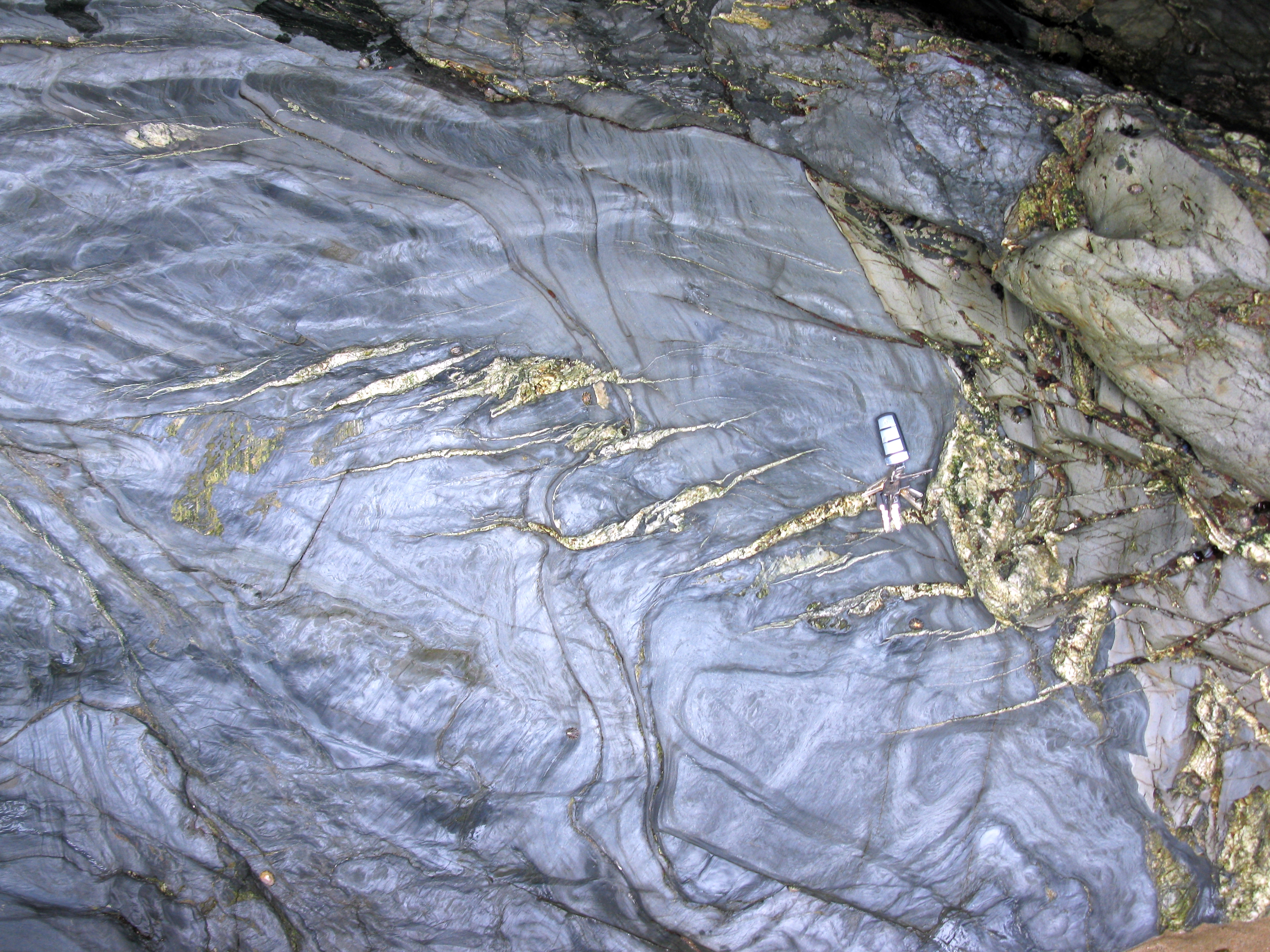|
Echelon Cracks
Echelon cracks are a related series of cracks in a planar structure and are a response to shearing forces in the plane of the surface. Such cracks are typically found in asphalt roadways due to aseismic creep and in other planar structures such as walls and building facades due to non-uniform settlement into soft soil. Such cracks in a uniform surface will form at a uniform angle to the general direction of shear and will progress with more-or-less uniform spacing, length, and offset, thus forming the echelon. On a larger scale, a zone between offset strike slip faults may have minor ''en echelon'' fault strands that accommodate the shearing motion induced in the region. On rock undergoing these shearing stresses en echelon veins may occur as fracture Fracture is the separation of an object or material into two or more pieces under the action of stress. The fracture of a solid usually occurs due to the development of certain displacement discontinuity surfaces within the so ... [...More Info...] [...Related Items...] OR: [Wikipedia] [Google] [Baidu] |
Aseismic Creep
In geology, aseismic creep or fault creep is measurable surface displacement along a fault in the absence of notable earthquakes. Aseismic creep may also occur as "after-slip" days to years after an earthquake. Notable examples of aseismic slip include faults in California (e.g. Calaveras Fault, Hayward Fault, and San Andreas Fault). Causes Aseismic creep accommodates far-field motions on localized zones of deformation at tectonic plate boundaries. The underlying causes of aseismic creep are primarily attributed to poor frictional strength of the fault, low normal stress acting on the fault in the shallow crust, and excessive pore-fluid pressures, which limit the viable amount of normal stress on a fault. The frictional reaction of geologic materials can explain the transition from seismic to aseismic deformation with depth. Friction along faults can cause sudden slips with associated stress drops (earthquakes), along with phases of no motion as stress recharges. Measure ... [...More Info...] [...Related Items...] OR: [Wikipedia] [Google] [Baidu] |
Strike Slip Fault
In geology, a fault is a planar fracture or discontinuity in a volume of rock across which there has been significant displacement as a result of rock-mass movements. Large faults within Earth's crust result from the action of plate tectonic forces, with the largest forming the boundaries between the plates, such as the megathrust faults of subduction zones or transform faults. Energy release associated with rapid movement on active faults is the cause of most earthquakes. Faults may also displace slowly, by aseismic creep. A ''fault plane'' is the plane that represents the fracture surface of a fault. A ''fault trace'' or ''fault line'' is a place where the fault can be seen or mapped on the surface. A fault trace is also the line commonly plotted on geologic maps to represent a fault. A ''fault zone'' is a cluster of parallel faults. However, the term is also used for the zone of crushed rock along a single fault. Prolonged motion along closely spaced faults can blur t ... [...More Info...] [...Related Items...] OR: [Wikipedia] [Google] [Baidu] |
En Echelon Veins
In structural geology, en échelon veins, "en échelon gash fractures" or "Tiger Stripes" are structures within rock caused by noncoaxial shear. En echelon veins can be parallel or subparallel, closely-spaced, overlapping or step-like minor structural features in rock. These step-like features can be faults, or tension fractures, that are oblique to the overall structural trend. They originate as tension fractures that are parallel to the major stress orientation, σ1, in a shear zone. They are subsequently filled by precipitation of a mineral, typically quartz Quartz is a hard, crystalline mineral composed of silica ( silicon dioxide). The atoms are linked in a continuous framework of SiO4 silicon-oxygen tetrahedra, with each oxygen being shared between two tetrahedra, giving an overall chemical ... or calcite. As soon as they form, they begin to rotate in the shear zone. Subsequent growth of the fracture therefore causes the vein to take on a sigmoidal shape. The ... [...More Info...] [...Related Items...] OR: [Wikipedia] [Google] [Baidu] |
Fracture (geology)
A fracture is any separation in a geologic formation, such as a joint or a fault that divides the rock into two or more pieces. A fracture will sometimes form a deep fissure or crevice in the rock. Fractures are commonly caused by stress exceeding the rock strength, causing the rock to lose cohesion along its weakest plane. Fractures can provide permeability for fluid movement, such as water or hydrocarbons. Highly fractured rocks can make good aquifers or hydrocarbon reservoirs, since they may possess both significant permeability and fracture porosity. Brittle deformation Fractures are forms of brittle deformation. There are two types of primary brittle deformation processes. Tensile fracturing results in ''joints''. ''Shear fractures'' are the first initial breaks resulting from shear forces exceeding the cohesive strength in that plane. After those two initial deformations, several other types of secondary brittle deformation can be observed, such as ''frictional s ... [...More Info...] [...Related Items...] OR: [Wikipedia] [Google] [Baidu] |



